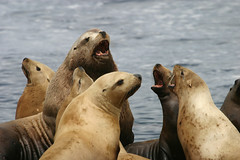Format your citations for this paper using the "Citing the Scientific Literature" guide provided by your instructor.
 USFW
USFW
Make sure someone else can find the resource you use. Essential information for a citation:
- Authorship
- Title & subtitle
- Name of journal or book
- Volume number
- Inclusive page numbers
- Year of publication
- Month or number if volume is not paged consecutively
- URL if digital